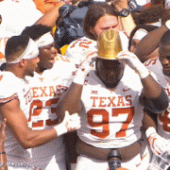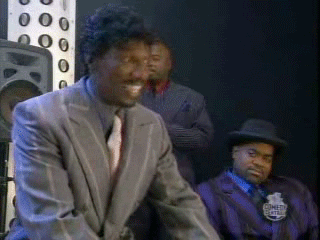-
Posts
506 -
Joined
-
Last visited
Content Type
Profiles
Forums
Store
Downloads
Recruiting - 2020
2019-2020 Football Season
Football
Entertainment
Sports
News and Business
Cloak Room
Transfer Portal
Recruiting
Events
Posts posted by The Golden Hat
-
-
21 minutes ago, The Golden Hat said:
How many times is Kris Boyd going to get beat in this game?
Boyd has been beaten 5 times, by my count.
Now he owes us a pick.
-
How many times is Kris Boyd going to get beat in this game?
-
Cody Wilson is not in U.S., says APD. He's in Taipei, Taiwan, and recently skipped his flight back home.
-
Take this shit to the Colt McCoy thread
-
2 hours ago, Bill Lumbergh said:
He doesn't make as many dumb decisions in terms of throwing where he shouldn't, but that's often because he makes no decision at all and just takes a sack, which is also dumb.
This. Right here.
-
20 minutes ago, GreenspointTexas said:
Game is gonna hinge on designed run plays for Sam
I'm guessing these are the plays we didn't run against Maryland? Especially when we were desperate for yardage late in the 4th?
-
1 hour ago, jettrink said:
Ridiculous! This is further embarrassment to UT, and UT doesn't need any help.
Get the fuck out of here Figurelli
-
27 minutes ago, The Golden Hat said:
Here's a good youtube channel to follow for game uploads:
https://www.youtube.com/channel/UCKd8Yz4fvdIGQlmHvkedMAw/videos
USC game is there
-
15 hours ago, thepop said:
Reading the first 20 pages of this thread is hilarious.
-
 3
3
-
 2
2
-
-
Here's a good youtube channel to follow for game uploads:
https://www.youtube.com/channel/UCKd8Yz4fvdIGQlmHvkedMAw/videos
-
No chance I'm reading a feel-good piece at this time.
-
Quote
Texas Opens -20 Vs. Tulsa
LOL
-
15 hours ago, mdmost said:
Or maybe some of you fucks should log off
after a loss. -
So, in theory, if I spot something with the offense I could jump in there and call some plays? Because I'd love to try a sideways pass or three.
-
On 9/2/2018 at 4:09 PM, Bobby_Batronic said:
You know, one could put together a pretty impressive highlight clip of Sam's better moments

-
 1
1
-
-
Can you wear a brown paper bag on your head, or does it have to be clear?
-
 3
3
-
-
-
22 minutes ago, MOODY said:
After calming down and realizing that Texas football is just average I pulled all of my gear back out.
Fuck off troll.
-
Quote
"The reason we played so poorly, in my opinion, is actually a good reason, because of how close this team has become, how badly they wanted to perform for each other, for their coaches," Herman said.
I don't think I have ever heard a bigger pile of bullshit, from any Texas coach, in any sport, ever.
-
It's déjà vu all over again.
-
 1
1
-
-
It's obvious that Herman has no answers. CDC has to be punching holes in the wall by now.
-
"We've never been this close to beating Maryland and that's why we lost." - Texas Head Football Coach Tom Herman
-
 3
3
-
 1
1
-
-
Fuck me in the ass.
-
 1
1
-
-
Fuck everything



Texas vs TCU Game Thread
in Football
Posted
Who is this dipshit announcer talking about targeting?